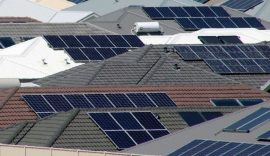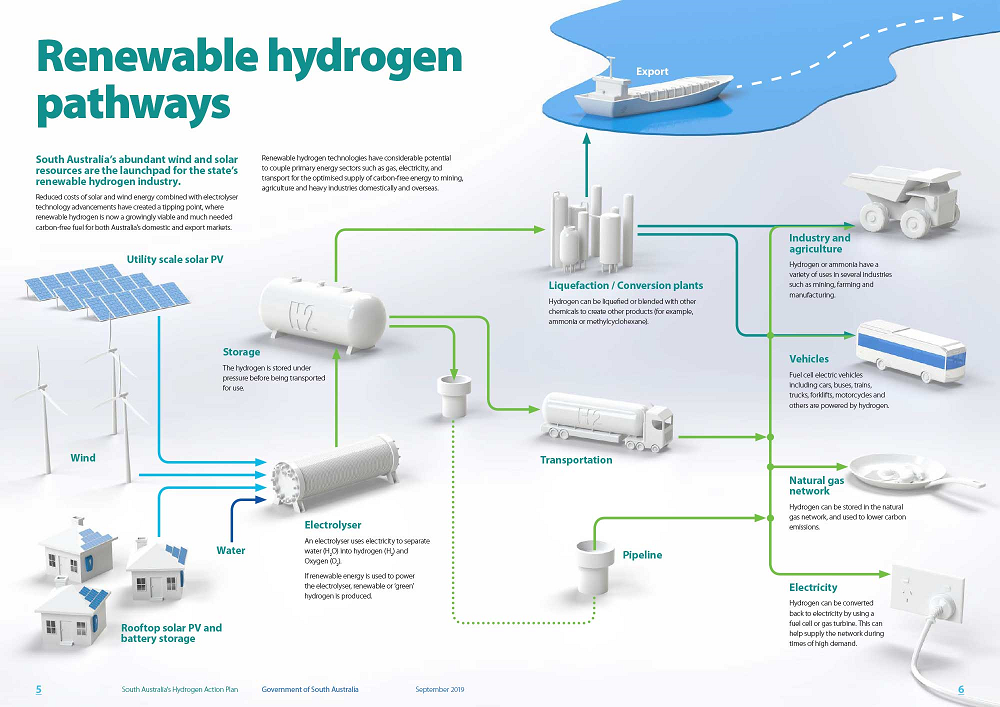Post by juliar on Jul 17th, 2020 at 7:40pm
Oh dear won't the home solar Fans be annoyed!!
A house with solar creates a high voltage on the mains that damages appliances in neighboring houses.
Cheaper electricity—the eternal dream!
AMM 17.07.19.
It has been edging forward for some time. Especially after the ‘really great deals’ that lured the masses to uptake solar installations.
Be independent, save wads of money, even sell your generated power back to the energy provider—how sweet it was! As it is the energy provider, no, not you, that sets the price of electricity they now intend to reap your rewards. See how they will do it!
Householders with rooftop solar panels and batteries have reacted with fury to proposals which could see them charged for exporting power to the electricity grid.
Over the past decade, state governments have actively incentivized households to feed their solar into the grid, by offering generous feed-in tariff schemes.
Most have now closed to new entrants. But now, welfare groups and transmission company SA Power Networks have asked the Australian Energy Markets Commission to change market rules to impose a charge on household exporters.
https://morningmail.org/cheaper-electricity-the-eternal-dream/#more-118870
Rooftop solar panel owners could be getting charged fees to sell energy back to the grid
Source: ABC
They argue that under the current system, households without solar could be unfairly burdened with the cost of augmenting power networks to cope with the increase of new panels, which is already placing a strain on the network in states with heavy solar penetration like South Australia.
SA Power Networks spokesman Paul Roberts said the state’s grid is already reaching its capacity to support household solar networks.
“Actual customers themselves are seeing that their inverters are turning off at times because of voltage rising in the network,” Mr Roberts told ABC Radio Adelaide.
“And the renewables industry is getting concerned that networks like ours will have to impose zero limits on new customers so that we can accept those customers, but they won’t be able to export.
“So there needs to be a solution to that.”
Mr Roberts said SAPN’s proposal would likely see $10-$30 added to the annual electricity bill of a solar customer, and would not change the overall amount of money that the company was allowed to charge customers.
He said the current proposal would see existing solar customers excluded from paying, but conceded that could change.
Solar owners furious
The idea has drawn a furious response from many solar panel owners, including Adelaide man Michael Preus.
“People will just disconnect them, and tell them to get stuffed, that’s what I would do,” he said.
Mr Preus said he had installed his household solar PV system to save money and help the environment, but was now questioning his investment.
“We’ll never, ever in our lifetime recoup our investment, the return is just not there.”
But welfare groups including the Australian Council of Social Service and St Vincent de Paul Society are backing the move to charge people who export power.
SA Council of Social Service Chief Executive Ross Womersley said without change, households who cannot afford solar could be unfairly penalised for the cost of maintaining electricity supply.
“Those non-solar households that don’t have the benefits of solar will be left holding the grid and bearing the additional cost,” he said.
SA Power Networks spokesman Paul Roberts likened the charge to proposals to taxing electric vehicles, which are not contributing to petrol excise.
“Governments are really thinking about how are we going to get people who buy electric vehicles to contribute to road funding,” he said.
“And in the same way, I think we should be thinking about that for solar customers.”
The Grattan Institute’s Director of Energy Tony Wood said the problem should have been fixed years ago.
“We should have got this right in the first place,” he said.
“It does seem fair that you should pay for the use of that grid, otherwise the people who are not using solar are effectively subsidising your solar system.
“They’re not doing it deliberately.
https://www.abc.net.au/news/2020-07-16/rooftop-solar-owners-could-be-charged-to-sell-energy-to-the-grid/12461748
A house with solar creates a high voltage on the mains that damages appliances in neighboring houses.
Cheaper electricity—the eternal dream!
AMM 17.07.19.
It has been edging forward for some time. Especially after the ‘really great deals’ that lured the masses to uptake solar installations.
Be independent, save wads of money, even sell your generated power back to the energy provider—how sweet it was! As it is the energy provider, no, not you, that sets the price of electricity they now intend to reap your rewards. See how they will do it!
Householders with rooftop solar panels and batteries have reacted with fury to proposals which could see them charged for exporting power to the electricity grid.
Over the past decade, state governments have actively incentivized households to feed their solar into the grid, by offering generous feed-in tariff schemes.
Most have now closed to new entrants. But now, welfare groups and transmission company SA Power Networks have asked the Australian Energy Markets Commission to change market rules to impose a charge on household exporters.
https://morningmail.org/cheaper-electricity-the-eternal-dream/#more-118870
Rooftop solar panel owners could be getting charged fees to sell energy back to the grid
Source: ABC
They argue that under the current system, households without solar could be unfairly burdened with the cost of augmenting power networks to cope with the increase of new panels, which is already placing a strain on the network in states with heavy solar penetration like South Australia.
SA Power Networks spokesman Paul Roberts said the state’s grid is already reaching its capacity to support household solar networks.
“Actual customers themselves are seeing that their inverters are turning off at times because of voltage rising in the network,” Mr Roberts told ABC Radio Adelaide.
“And the renewables industry is getting concerned that networks like ours will have to impose zero limits on new customers so that we can accept those customers, but they won’t be able to export.
“So there needs to be a solution to that.”
Mr Roberts said SAPN’s proposal would likely see $10-$30 added to the annual electricity bill of a solar customer, and would not change the overall amount of money that the company was allowed to charge customers.
He said the current proposal would see existing solar customers excluded from paying, but conceded that could change.
Solar owners furious
The idea has drawn a furious response from many solar panel owners, including Adelaide man Michael Preus.
“People will just disconnect them, and tell them to get stuffed, that’s what I would do,” he said.
Mr Preus said he had installed his household solar PV system to save money and help the environment, but was now questioning his investment.
“We’ll never, ever in our lifetime recoup our investment, the return is just not there.”
But welfare groups including the Australian Council of Social Service and St Vincent de Paul Society are backing the move to charge people who export power.
SA Council of Social Service Chief Executive Ross Womersley said without change, households who cannot afford solar could be unfairly penalised for the cost of maintaining electricity supply.
“Those non-solar households that don’t have the benefits of solar will be left holding the grid and bearing the additional cost,” he said.
SA Power Networks spokesman Paul Roberts likened the charge to proposals to taxing electric vehicles, which are not contributing to petrol excise.
“Governments are really thinking about how are we going to get people who buy electric vehicles to contribute to road funding,” he said.
“And in the same way, I think we should be thinking about that for solar customers.”
The Grattan Institute’s Director of Energy Tony Wood said the problem should have been fixed years ago.
“We should have got this right in the first place,” he said.
“It does seem fair that you should pay for the use of that grid, otherwise the people who are not using solar are effectively subsidising your solar system.
“They’re not doing it deliberately.
https://www.abc.net.au/news/2020-07-16/rooftop-solar-owners-could-be-charged-to-sell-energy-to-the-grid/12461748






















